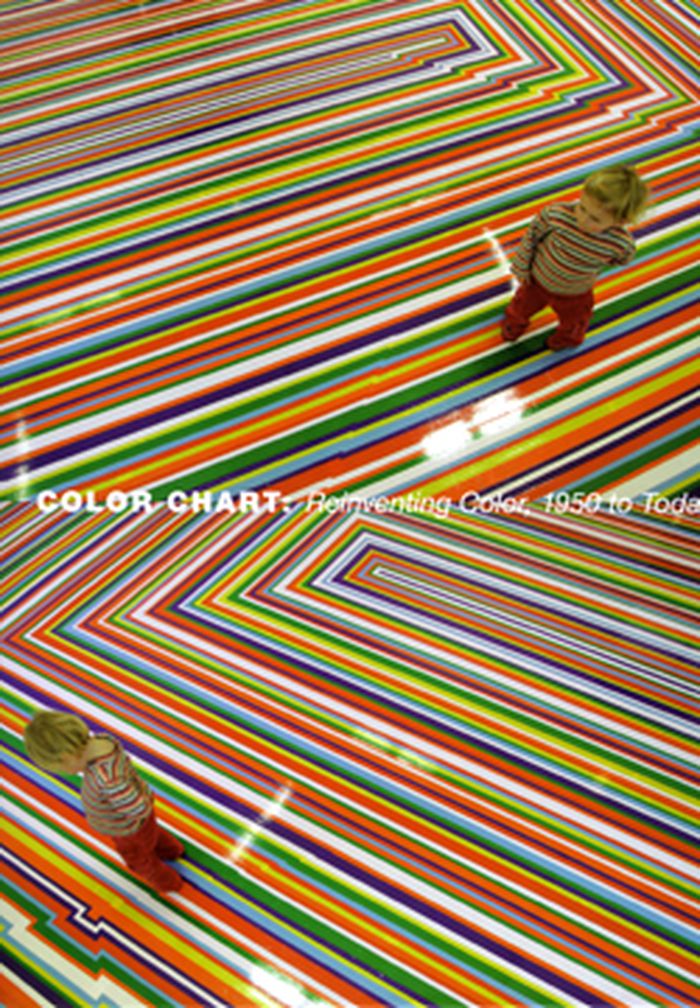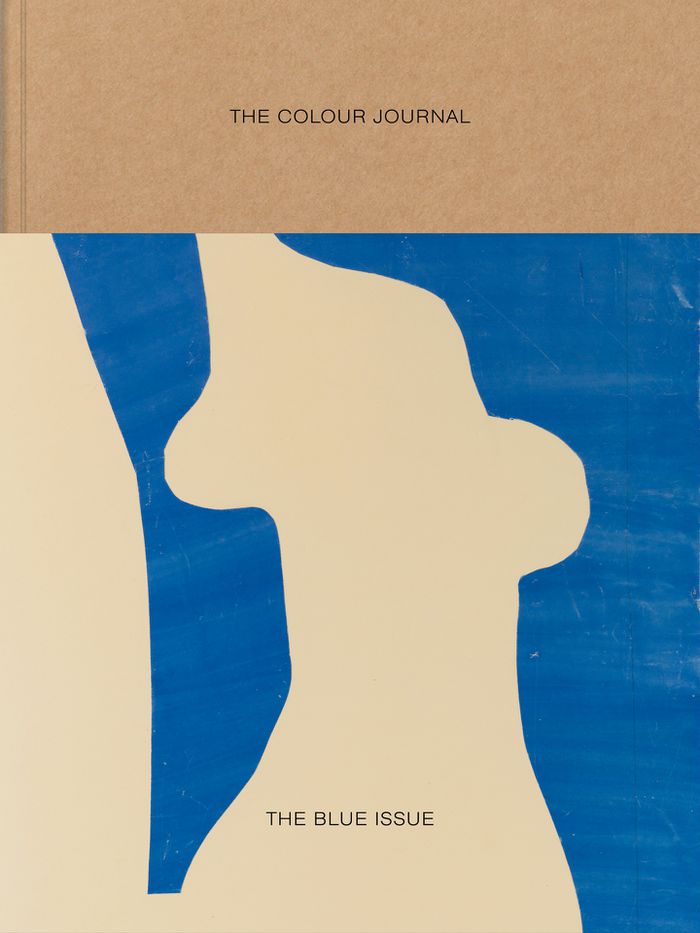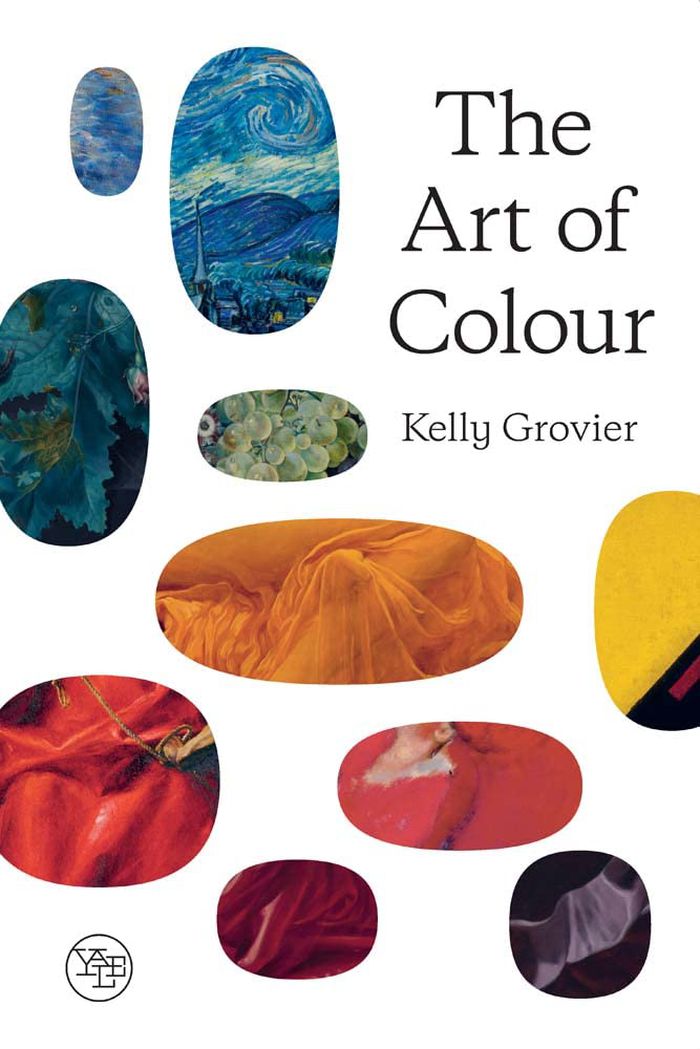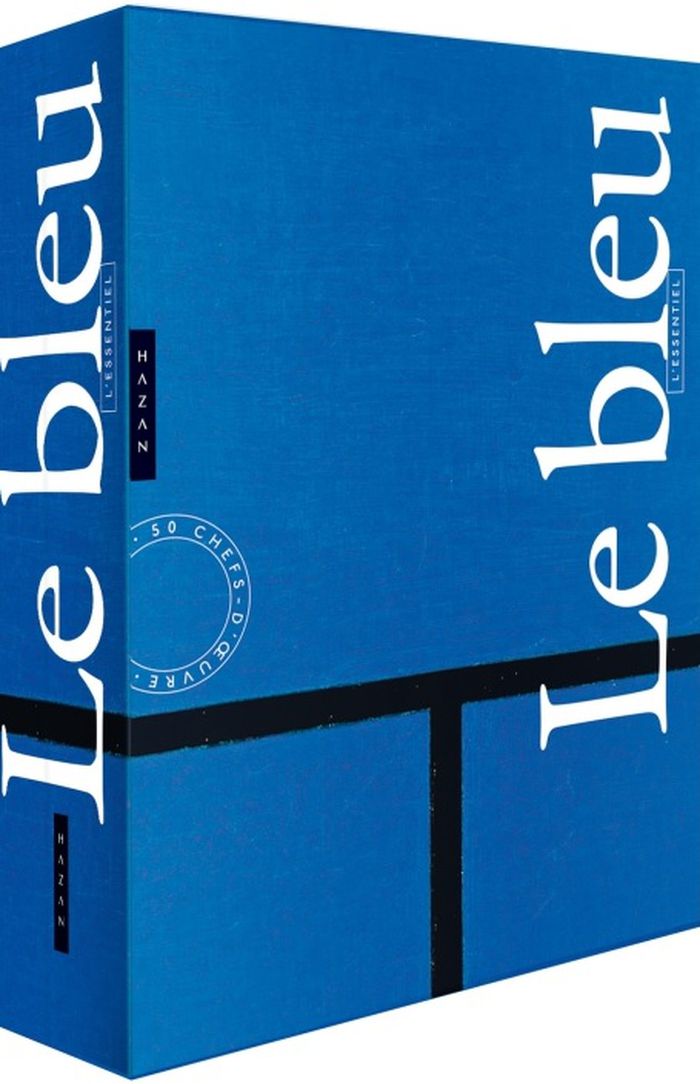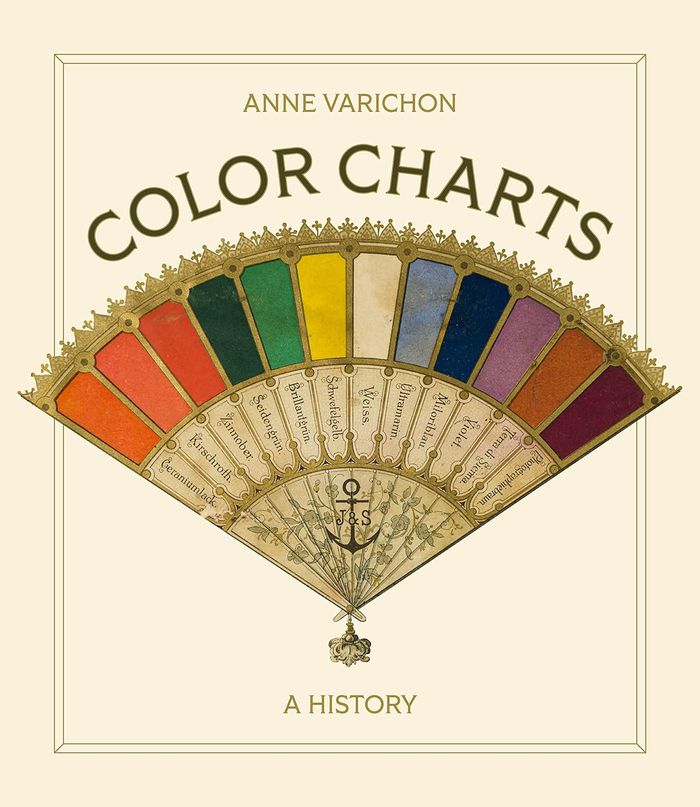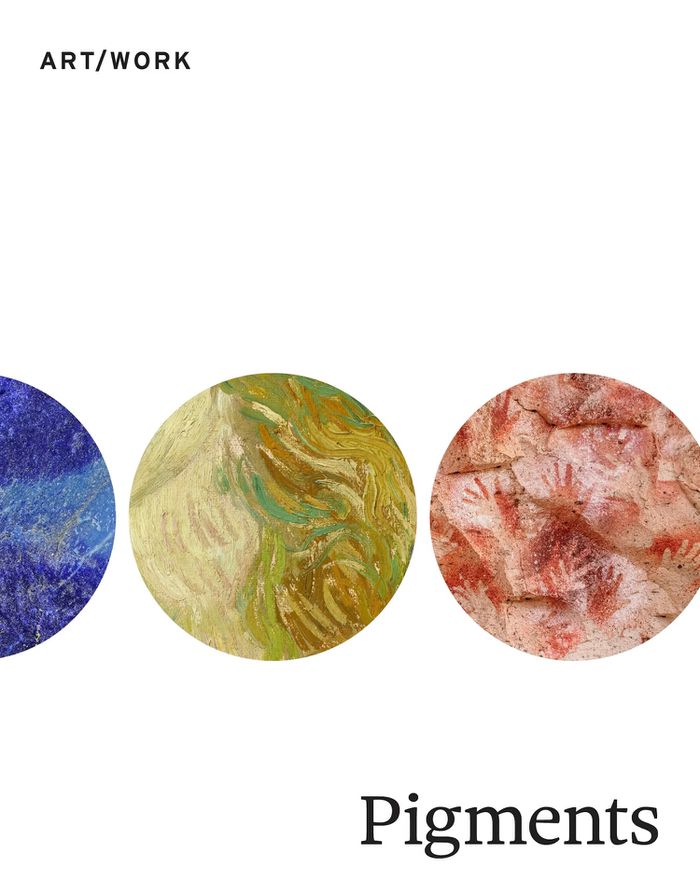$58.00
(disponible sur commande)
Résumé:
280 mostly full page color illustrations. Text by Ann Temkin, Briony Fer. Melissa Ho, Nora Lawrence. Published to accompany a major exhibition at The Museum of Modern Art, New York, this volume begins with Marcel Duchamp’s Tu m’, the artist’s final painting, made in 1918, with its long array of color samples looming across the canvas. This early recognition of color’s(...)
Color Chart: Reinventing Color, 1950 to Today
Actions:
Prix:
$58.00
(disponible sur commande)
Résumé:
280 mostly full page color illustrations. Text by Ann Temkin, Briony Fer. Melissa Ho, Nora Lawrence. Published to accompany a major exhibition at The Museum of Modern Art, New York, this volume begins with Marcel Duchamp’s Tu m’, the artist’s final painting, made in 1918, with its long array of color samples looming across the canvas. This early recognition of color’s commercial nature was fully explored more than three decades later by artists such as Robert Rauschenberg, Andy Warhol, Gerhard Richter and Alighiero Boetti, who in the 1950s to the 1970s, with a host of others, redefined the parameters of color from a matter of personal expression to one of arbitrary systems and random processes. The repercussions of this transformation continue to be felt into the twenty-first century, in work by artists including Sherrie Levine, Mike Kelley and Damien Hirst, as well as others who explore color in digital technology This volume traces the lineage of the questions provoked by color’s new status, and the variety of answers that have resulted.
La couleur dans la ville
$59.95
(disponible sur commande)
Résumé:
Dans les décennies d'après-guerre, la couleur semblait avoir déserté la ville. Aujourd'hui, elle retrouve pleinement son droit de cité et investit aussi bien les immeubles de logement que les bureaux, les équipements, et même les infrastructures de transport. Les architectes et les urbanistes la considèrent comme indispensable à la compréhension de l'espace urbain et à la(...)
La couleur dans la ville
Actions:
Prix:
$59.95
(disponible sur commande)
Résumé:
Dans les décennies d'après-guerre, la couleur semblait avoir déserté la ville. Aujourd'hui, elle retrouve pleinement son droit de cité et investit aussi bien les immeubles de logement que les bureaux, les équipements, et même les infrastructures de transport. Les architectes et les urbanistes la considèrent comme indispensable à la compréhension de l'espace urbain et à la qualité de vie des habitants, susceptible d'enrichir l'environnement en lui apportant lisibilité, rythme et perspective. Cet ouvrage dresse un panorama historique de la couleur dans Le milieu urbain au cours du XXe siècle, avec des éclairages sur certains mouvements emblématiques tels que l'Art nouveau, l'avant-garde russe, le modernisme ou L'art cinétique. Il décrit ensuite les outils et les méthodes - gammes, palettes, nuanciers - qui permettent d'intervenir dans le paysage urbain avec rigueur et subtilité. Un certain nombre d'expériences, menées dans les domaines de La restauration chromatique du patrimoine urbain et de l'architecture contemporaine, retracent les démarches exemplaires de certains concepteurs. Depuis Jean-Philippe Lenclos, qui parcourt le monde pour constituer des " atlas de la couleur ", au Centre de la couleur de Moscou, qui œuvre à l'échelle de la métropole tout entière, et jusqu'aux architectes comme Jean Nouvel ou Christian de Portzamparc, qui utilisent la couleur (et de plus en plus la couleur-lumière) comme un matériau à part entière, nombreux sont les acteurs qui montrent que la question de la couleur dans nos villes, loin d'être marginale, est aujourd'hui devenue centrale.
$63.00
(disponible en magasin)
Résumé:
Au cours du XXe siècle, l'architecture a largement ignoré la couleur, et si ce mépris n'est plus à l'ordre du jour, loin de là, il subsiste à son égard une méconnaissance de ses possibilités et des conditions pour optimiser son utilisation. En effet, la couleur n'est pas anodine, elle est matière à part entière : elle peut transformer l'espace architecturé et le valoriser(...)
Chromo-architecture : l'art de construire en couleur
Actions:
Prix:
$63.00
(disponible en magasin)
Résumé:
Au cours du XXe siècle, l'architecture a largement ignoré la couleur, et si ce mépris n'est plus à l'ordre du jour, loin de là, il subsiste à son égard une méconnaissance de ses possibilités et des conditions pour optimiser son utilisation. En effet, la couleur n'est pas anodine, elle est matière à part entière : elle peut transformer l'espace architecturé et le valoriser si elle répond à une réelle prise en compte du milieu naturel et construit dans lequel elle s'exerce, et des enjeux auxquels elle est confrontée. Largement illustré par des exemples tirés de projets, de références de chantier, de réalisations concrètes, «Chromo-architecture» propose une réflexion à la fois théorique et pratique sur l'application de la couleur dans l'environnement, l'urbanisme et l'architecture.
$111.00
(disponible en magasin)
Résumé:
The Colour Journal is not simply another publication about the meaning of colour. Colours have not been approached in a literal way but as a starting point, a pretext to tell bigger stories, a means of revealing the story within the story: we all know Henri Matisse's Blue Nudes, but who can say the same about Biskra, the forgotten Algerian oasis that inspired him? We may(...)
The Colour Journal: The blue issue, Vol. 1
Actions:
Prix:
$111.00
(disponible en magasin)
Résumé:
The Colour Journal is not simply another publication about the meaning of colour. Colours have not been approached in a literal way but as a starting point, a pretext to tell bigger stories, a means of revealing the story within the story: we all know Henri Matisse's Blue Nudes, but who can say the same about Biskra, the forgotten Algerian oasis that inspired him? We may also know about the ultramarine pigment that Yves Klein patented, but who has heard of Edouard Adam, a merchant in Montparnasse who discovered its formula? The Colour Journal intends to fight against the dictatorship of immediacy, to give depth to the pretty images of fashion magazines and Instagram feeds, to delve into familiar moments of art history and discover what lies beneath, to dig into museum libraries and reveal unseen treasures. To bring this enterprise to life, The Colour Journal travelled from Idaho to Guangxi, from antiquity to the present day, to bring you a dialogue between forgotten archives and contemporary photography: follow a denim hunter in the American West, visit one of China's last cultural minorities, peek into Helmut Newton's private collection of Polaroids and dive into David Hockney's chlorinated swimming pools.
$54.00
(disponible sur commande)
Résumé:
In this new approach to the history of colour, Kelly Grovier takes readers on a search for the intriguing and unusual. In Grovier’s telling, a colour’s connotations are never fixed but are endlessly evolving. Knowledge of a pigment and its history can unlock meaning in the works that feature it. Grovier employs the term ''artymology'' to suggest that colour is a(...)
The art of colour: a history in 39 pigments
Actions:
Prix:
$54.00
(disponible sur commande)
Résumé:
In this new approach to the history of colour, Kelly Grovier takes readers on a search for the intriguing and unusual. In Grovier’s telling, a colour’s connotations are never fixed but are endlessly evolving. Knowledge of a pigment and its history can unlock meaning in the works that feature it. Grovier employs the term ''artymology'' to suggest that colour is a linguistic device, where pigments stand in for syllables in art’s language. Colour is the site of invigorating conflict—a battleground where past and present, influence and originality, and superstition and science merge into meanings that complicate and intensify our appreciation of a given work. How might it change our understanding of a well-known masterpiece like Vincent van Gogh’s ''Starry Night'' to know that the intense yellow moon in that painting was sculpted from clumps of dehydrated urine from cows that were fed nothing but mango leaves? Or that the cobalt blue pigment in Van Gogh’s sky shares a material bloodline with the glaze of Ming Dynasty porcelain? Consisting of ten chapters, each presenting a biography of a family of colours, this volume mines a rich vein of pigmentation from prehistoric cave painting to art of the present day. The book also includes features exploring important milestones in the history of colour theory from the Enlightenment to the twentieth century.
Le bleu : L'essentiel
$44.95
(disponible sur commande)
Résumé:
Sous forme de leporello, une histoire de l'art occidental se focalisant sur la couleur bleu à travers une cinquantaine de tableaux, de Giotto à Yves Klein en passant par Vermeer, Léonard de Vinci, Van Gogh ou encore Bosch.
Le bleu : L'essentiel
Actions:
Prix:
$44.95
(disponible sur commande)
Résumé:
Sous forme de leporello, une histoire de l'art occidental se focalisant sur la couleur bleu à travers une cinquantaine de tableaux, de Giotto à Yves Klein en passant par Vermeer, Léonard de Vinci, Van Gogh ou encore Bosch.
Color charts: A history
$74.00
(disponible en magasin)
Résumé:
Anne Varichon traces the emergence of modern color charts from a set of processes developed over the centuries in various contexts. She presents illuminating examples that bring this remarkable story to life, from ancient writings revealing attention to precise shade to contemporary designers’ color charts, dyers’ notebooks, and Werner’s famous color nomenclature.(...)
Color charts: A history
Actions:
Prix:
$74.00
(disponible en magasin)
Résumé:
Anne Varichon traces the emergence of modern color charts from a set of processes developed over the centuries in various contexts. She presents illuminating examples that bring this remarkable story to life, from ancient writings revealing attention to precise shade to contemporary designers’ color charts, dyers’ notebooks, and Werner’s famous color nomenclature. Varichon argues that color charts have linked generations of artists, artisans, scientists, industrialists, and merchants, and have played an essential and enduring role in the way societies think about color. Drawing on nearly two hundred documents from public and private collections, almost all of them previously unpublished, this wonderfully illustrated book shows how the color chart, in its many distinct forms and expressions, is a practical tool that has transcended its original purpose to become an educational aid and subject of contemplation worthy of being studied and admired.
$18.95
(disponible sur commande)
Résumé:
Une histoire du jaune dans les sociétés européennes, de la place importante que lui accordaient les Grecs et les Romains dans les rituels religieux à sa discrétion actuelle. La couleur est ambivalente, notamment au Moyen Age, époque à laquelle elle est à la fois signe de mensonge ou d'avarice, liée à Judas ou aux hypocrites, mais aussi de pouvoir ou d'abondance.
Jaune : Histoire d'une couleur
Actions:
Prix:
$18.95
(disponible sur commande)
Résumé:
Une histoire du jaune dans les sociétés européennes, de la place importante que lui accordaient les Grecs et les Romains dans les rituels religieux à sa discrétion actuelle. La couleur est ambivalente, notamment au Moyen Age, époque à laquelle elle est à la fois signe de mensonge ou d'avarice, liée à Judas ou aux hypocrites, mais aussi de pouvoir ou d'abondance.
Petite histoire des couleurs
$42.95
(disponible sur commande)
Résumé:
Des pigments ornant les grottes préhistoriques aux néons lumineux de Dan Flavin en passant par les monochromes d’Yves Klein et les créations de Véronèse, Van Gogh, Delaunay, Warhol et Rothko, cet ouvrage explore à travers 60 chefs-d’œuvre, l’histoire, les matériaux et la symbolique des couleurs à travers les siècles et les cultures. Accessible, concis et richement(...)
Petite histoire des couleurs
Actions:
Prix:
$42.95
(disponible sur commande)
Résumé:
Des pigments ornant les grottes préhistoriques aux néons lumineux de Dan Flavin en passant par les monochromes d’Yves Klein et les créations de Véronèse, Van Gogh, Delaunay, Warhol et Rothko, cet ouvrage explore à travers 60 chefs-d’œuvre, l’histoire, les matériaux et la symbolique des couleurs à travers les siècles et les cultures. Accessible, concis et richement illustré, le livre nous explique les quand, comment et pourquoi de l’évolution des couleurs.
Pigments
$39.95
(disponible en magasin)
Résumé:
Over the millennia, humans have used pigments to decorate, narrate, and instruct. Charred bone, ground earth, stones, bugs, and blood were the first pigments. New pigments were manufactured by simple processes such as corrosion and calcination until the Industrial Revolution introduced colors outside the spectrum of the natural world. "Pigments" brings together leading(...)
juin 2024
Pigments
Actions:
Prix:
$39.95
(disponible en magasin)
Résumé:
Over the millennia, humans have used pigments to decorate, narrate, and instruct. Charred bone, ground earth, stones, bugs, and blood were the first pigments. New pigments were manufactured by simple processes such as corrosion and calcination until the Industrial Revolution introduced colors outside the spectrum of the natural world. "Pigments" brings together leading art historians and conservators to trace the history of the materials used to create color and their invention across diverse cultures and time periods. This richly illustrated book features incisive historical essays and case studies that shed light on the many forms of pigments—the organic and inorganic; the edible and the toxic; and those that are more precious than gold. It shows how pigments were as central to the earliest art forms and global trade networks as they are to commerce, ornamentation, and artistic expression today. The book reveals the innate instability and mutability of most pigments and discusses how few artworks or objects look as they did when they were first created.
